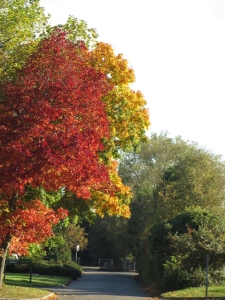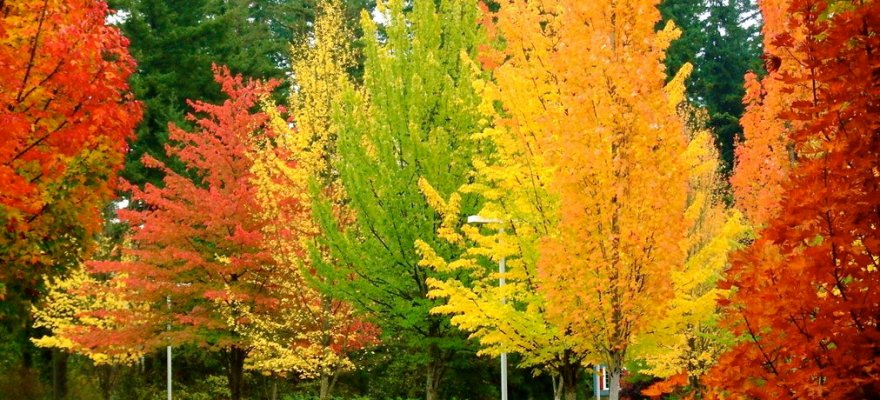Seeing all the beautiful colours of the trees against the backdrop of a swirling autumnal sky, made me want to recap on why some plants lose their leaves in such a kaleidoscopic fashion.
Leaves act as mini factories for plant food production. When light hits the leaf surface, it becomes part of an essential chemical reaction. When carbon dioxide and water are combined with energy from light, the result is glucose (sugar) and oxygen. Chloroplasts within leaf cells are responsible for this reaction. The plant uses up the glucose, but the oxygen is released into the atmosphere.
In temperate regions, as the days become shorter and colder, the levels of light are not sufficient enough for plants to photosynthesise. One way many plant species have of adapting to this environmental change is to slow down or halt photosynthesis during winter months. One by one, leaves start to shut down their chloroplast factories; no more sugar is being made. Plants are able to live off sugars they have already stored away.
Chlorophyll is a green pigment which resides in the chloroplasts, and is necessary in helping to create glucose from carbon dioxide and light. Other pigments, such as carotenoids and anthocyanins, are also present in leaves, but they are usually masked by chlorophyll. However, when the chloroplasts begin to shut down, chlorophyll is no longer being produced in order to save the plant’s precious energy. The oranges and yellows result from higher levels of carotenoids, whereas anthocyanins are responsible for the red hues.

Autumn leaves showing different pigments – anthocyanins (reds) and carotenoids (yellow/orange). [Picture credit Olivia Cousins]
However, some trees don’t fully lose their leaves, even when chlorophyll production has stopped. For example, oaks and beeches don’t fully form their abscission layers until much later, so although many of their leaves freeze over and die, they remain on the branches until new leaf growth pushes them off in spring. This phenomenon is known as marcescence.
The lengths plants will go to in order to protect themselves is fascinating, and yet there is still more that remains to be uncovered. If we can understand the processes that drive plants to photosynthesise, then maybe we can use it to improve photosynthesis of crops, increasing growth and yield. It’s one way to save agriculture.
Winter is coming, but new discoveries might just be around the corner.




